#editions grasset
Text
Le bureau d'éclaircissement des destins de Gaëlle NOHANT : COUP de COEUR
Le bureau d’éclaircissement des destins de Gaëlle NOHANT : COUP de COEUR
J’ai lu La Part des Flammes de Gaëlle NOHANT, un roman qui n’était pas loin de m’évoquer la série Le Bal de la charité. Le souvenir de cette histoire reste forte et indélébile dans mon esprit et dans mon coeur. Je n’ai pu résister à ce nouveau livre de l’auteure, d’autant plus qu’il parlait des camps de concentration et des objets laissés derrière toutes ces populations décimées par les Nazis,…

View On WordPress
#coup de coeur#Editions GRASSET#Historiques#Le bureau d&039;éclaircissement des destins#Nohant#Romances société et les autres
0 notes
Photo










Plants and Their Application to Ornament
A Nineteenth-Century Design Primer
by Eugène Grasset Introduction by David P. Becker
Chronicle Books, Museum Fine Arts Boston, San Francisco & Boston 2008, 104 pages, 29 x 33,5 cm., ISBN 978-0-8118-6145-8
euro 220,00
email if you want to buy :[email protected]
Elegant botanical illustrations from the classic 1897 design book Plants and Their Application to Ornament are reproduced in this lavish collection. Sure to delight artists, designers, and fans of the Arts and Crafts and Art Nouveau styles, this gorgeous volume features flowering plants depicted as realistic natural history-style illustrations and stylized images demonstrating plant-based design motifs used on textiles, wallpapers, and more. Published in association with the Museum of Fine Arts, Boston, this deluxe edition presents an important art history artifact, a useful design reference, and a lovely and ornamental objet d'art.
15/07/22
orders to: [email protected]
ordini a: [email protected]
twitter: @fashionbooksmi
instagram: fashionbooksmilano, designbooksmilano tumblr: fashionbooksmilano, designbooksmilano
#Eugène Grasset#botanical illustrations#classic 1897 design book#Arts & Crafts#Art Nouveau#flowering plants#textiles#walpapers#Museum Fine Arts Boston#Maurice Verneuil#J.Milesi#E.Hervegh#Anna Martin#Georges Bourgeot#Marcelle Gaudin#Marc Mangin#A.Poidevin#Camille Schlumberger#French artists#illustration books#fashionbooksmilano
67 notes
·
View notes
Photo

Jules Dassin in Rififi (Jules Dassin, 1955)
Cast: Jean Servais, Carl Möhner, Robert Manuel, Jules Dassin, Janine Darcey, Pierre Grasset, Robert Hossein, Magali Noël, Marcel Lupovici, Marie Sabouret, Dominque Maurin. Screenplay: Jules Dassin, René Wheeler, Auguste Le Breton, based on a novel by Le Breton. Cinematography: Philippe Agostini. Production design: Alexandre Trauner. Film editing: Roger Dwyre. Music: Georges Auric.
The success of Rififi had a lasting effect on the "caper" or "heist" genre, which is still with us in one form or another, including the Mission: Impossible movies. Dassin's 30-minute sequence depicting the break-in and safe-cracking was hailed as a tour de force. I can't help wondering if Robert Bresson saw Rififi before he made his great 1956 film A Man Escaped, which takes a similar wordless and music-free approach to showing the preparations for Fontaine's prison break. Other than that, of course, nothing could be further from Fontaine's noble efforts to find freedom than the larcenous thuggery of Dassin's jewel thieves. Dassin knows, of course, that audiences respond positively to cleverness and skill, which is virtually all that his quartet of thieves have going for them. Tony (Jean Servais) is a brutal ex-con who beats his former mistress (Marie Sabouret) with a belt; Jo (Carl Möhner) is a swaggering, handsome guy for whom Tony took the rap for an earlier heist because Jo has a wife and child; Mario (Robert Manuel) is an easy-going ne'er-do-well; and César (Dassin under the pseudonym Perlo Vita) is a professional safe-cracker. Dassin manipulates us into thinking of these guys as heroes, if only because the gang led by Pierre Grutter (Marcel Lupovici), who wants to muscle in on their ill-gotten gains, is even worse. In the end, both sides are wiped out, but not before Jo's little boy (Dominique Maurin) is kidnapped and held for ransom. The final sequence of the film is particularly harrowing, especially to contemporary viewers used to mandated seatbelts and conscientious childproofing: A dying Tony drives the 5-year-old boy across Paris in an open convertible as the delighted kid stands on and even clambers over the seats of the speeding car. For all its unpleasantness, Rififi is as memorable as it was influential. It led to countless imitations, usually more light-hearted, including Dassin's own Topkapi (1964). It also revived Dassin's career, which had been at a standstill after he was blacklisted in Hollywood; Rififi's international success was a defiant nose-thumbing directed at HUAC's witch hunts.
3 notes
·
View notes
Text
proof B part 04
https://www.huffingtonpost.co.uk/2011/02/02/ysl-perfume-ad-banned-for-simulated-drug-use_n_7412334.html
YSL Perfume Ad Banned For 'Simulated Drug Use'
The Advertising Standards Agency (ASA) has upheld complaints against a television advertisement for Yves Saint Laurent fragrance Belle D'Opium.
The advertisement featured a woman dancing to a drum beat. She then pointed to her inner elbow and ran her finger along the inside of her forearm. She was then shown lying on the floor as a voice-over began "I am your addiction, I am Belle D'Opium. The new fragrance by Yves Saint Laurent."
Thirteen viewers complained that the advertisement was "irresponsible and offensive, because the woman's actions simulated drug use".
Yves Saint Laurent responded that they adhered to a strict code of business ethics which governed how they behaved, and added that they did not intend to use drug imagery in the ad. The company argued that the name Belle D'Opium "suggested the addictive qualities of women who wore the fragrance rather than the addictive effects of narcotics".
The ASA report concluded that "while we noted the consumer research found that most viewers did not consider the ad to be offensive, we nevertheless considered the woman's actions simulated drug use, and therefore concluded it was irresponsible and unacceptable for broadcast."
https://archive.is/wip/ClADX
https://www-francetvinfo-fr.translate.goog/culture/livres/affaire-gabriel-matzneff/l-article-a-lire-pour-comprendre-l-affaire-gabriel-matzneff-un-ecrivain-aux-pratiques-pedophiles-assumees_3762443.html?_x_tr_sl=fr&_x_tr_tl=en&_x_tr_hl=en-US&_x_tr_pto=wapp
The article to read to understand the Gabriel Matzneff affair, a writer with admitted pedophile practices
The author, who has never hidden having had relationships with young children, is the central character of the book "Consent", in which Vanessa Springora recounts the influence he exercised over her when she was 14 years old.
This is the case that is shaking the literary world and beyond. In the book Le Consentement (Editions Grasset), to be published Thursday January 2, the editor and author Vanessa Springora recounts her relationship under influence with the writer Gabriel Matzneff, in the mid-1980s. She was then 14 years old, he was in his fifties . In a context of denunciation of sexual violence, his testimony met with significant resonance and once again questioned the notion of sexual consent.
Franceinfo returns to this affair in detail.
Who is Gabriel Matzneff?
Born on August 12, 1936 , Gabriel Matzneff came from a family of exiled Russians, who fled their country after the communist revolution of 1917. Winner of the Renaudot essay prize in 2013 and published by Gallimard, the writer of 83 years has long been a popular figure in the literary world. He was a regular guest on television shows, from “Apostrophes” on Antenne 2 to “La Grande Librairie ” on France 5.
A prolific author, the man never hid his attraction to young children in his diaries, such as My Decomposed Loves (1990), or his essays, in particular Les Sous de seize ans (1974). “When you have held in your arms, kissed, caressed, possessed a 13-year-old boy, a 15-year-old girl, everything else seems bland, heavy, insipid,” he writes in this latest work.
For several years, he has been chronicling the news for Le Point . After the attacks of November 13, he hit the headlines again with a violent text on the "Bataclan generation" and the victims of terrorists.
And Vanessa Springora?
Aged 47, Vanessa Springora has been director of Julliard publishing since December 1, 2019 . A graduate in modern literature from Paris-Sorbonne University, she began her career in 2003 at the National Audiovisual Institute, before joining Julliard Editions in 2006 as an editorial assistant. She met Gabriel Matzneff in 1986 while accompanying her mother, a publishing press officer, to a dinner. The man begins to write to her, to wait for her at the end of school and to contact her to erase the age gap. “As I had not read any of his books, I did not know that this was a process that he systematically implemented ,” she told Bibliobs.
Why is the affair only breaking today?
Vanessa Springora's book marks a turning point. For the first time, a former relationship of the writer speaks. " At 14, you're not supposed to be waited on by a 50-year-old man when you leave school, you're not supposed to live in a hotel with him, nor are you supposed to end up in his bed, his penis in the mouth, at snack time" , she writes. Without acrimony or victimization, Vanessa Springora evokes the ambivalence of an era where sexual liberation flirted with the defense of pedophilia, the fascination exercised by the writer, then the weight of this story on her life.
And the author describes a hold that continues on the literary field: the writer writes a lot and puts down on paper his conquests and sexual adventures, including with young boys during trips to Asia. “As if his passage in my life had not devastated me enough, he must now document, falsify, record and engrave his misdeeds forever ,” writes Vanessa Springora. She evokes a “triple predation, sexual, literary and psychic”.
We let him do it because there was the aura of the artist. His work served as security. But why would the damage be less when the person who commits these acts is an artist?
Vanessa Springora
at “Libraries”
In the wake of the Weinstein affair and the #MeToo movement , which has forcefully denounced sexual violence since 2017, the work does not go unnoticed. "Vanessa Springora's book will constitute a major milestone in the history of pedophilia, to the extent that it is the first time that one of Matzneff's relationships has spoken out to give a very different sound from the sound of bell of Matzneff himself. He always presented the sexual relations he had with the children (…) as euphoric and pleasant (…)" , explains to franceinfo Pierre Verdrager, sociologist and author of The Forbidden Child. How pedophilia became scandalous.
Had no one reacted before?
Not really. At the time of the events, in the mid-1980s, the view on pedophilia was very different. When he published Mes amours décomposés in 1990 , Gabriel Matzneff was invited to the set of “Apostrophes”. The tone of the questions asked by Bernard Pivot is light, not to say complacent: "Why did you specialize in high school girls and kittens? Above 20, we see that that no longer interests you", "why collect them so much?” The answers, greeted by laughter from the audience, are accepted: "I prefer to have people in my life who are not yet hardened. A very young girl is rather kinder, even if she becomes hysterical very very quickly and also crazy until she's older."
Only one voice is raised against the writer. “Mr. Matzneff seems pitiful to me. What I don’t understand is that in this country, literature serves as an alibi for this kind of confidence ,” attacks Denise Bombardier, a Canadian writer. What Mr. Matzneff tells us (.. .), is that he sodomizes little girls of 14, 15 years old, that these little girls are crazy about him (…). We know that old gentlemen lure little children with sweets, Mr. Matzneff them attracts with its reputation." And to conclude: "How do these little girls cope afterwards? I believe that these little girls are withered and most of them for the rest of their days" . “I don’t understand how we can publish things like that ,” she snaps again.
Interviewed a few days ago by franceinfo, Denise Bombardier recounts how this position caused her to be vilified by certain French intellectuals. "I spoke up because people didn't say anything about his book. There was a Catholic couple who were there to defend fidelity in marriage and who didn't say two words. Besides, the lady just laughed , she remembers. I did what I had to do. Otherwise, I wouldn't have been able to look at myself in the mirror." Gabriel Matzneff's editor, Philippe Sollers, then called her a "cunt" on France 3, the literary critic of Le Monde, Josyane Savigneau, joked in the columns of her newspaper: "Discovering in 1990 that young girls aged 15 and 16 years old make love to men thirty years older than them, what a great deal!”
In 2013, when he received his Renaudot prize, a few voices were raised. A petition to remove it was launched by the association La Mouette and Innocence in danger filed a complaint against X for advocating sexual assault.
But why was pedophilia tolerated?
It seems difficult to imagine in 2019, but in those years there was a pro-pedophilia movement, supported by prestigious intellectuals. In an article published on January 26, 1977 in Le Monde , Gabriel Matzneff defended three men tried for indecent assault without violence on minors aged 15. “If a 13-year-old girl is entitled to the pill, what is that for? (…) Three years in prison for caresses and kisses is enough,” we can read in particular . At his side, in the list of signatories: Louis Aragon, Roland Barthes, Simone de Beauvoir, André Glucksmann, Bernard Kouchner, Jack Lang, and even Jean-Paul Sartre.
As sociologist Pierre Verdrager explained on franceinfo , “pedophilia was [then] the subject of an attempt to valorize it in the intellectual world”. “ It was a time when there was an attempt at liberation on all horizons and we considered that pedophilia was part of that: liberation of women, liberation of gays, liberation of sexuality and the discourse on sexuality,” he resituates. The age of majority was just lowered to 18 in 1974 and, "in this context, it was thought that it was possible to consider sexual relations between adults and children as valid." In a text where he returned to Libération 's support for this pro-pedophilia movement , journalist Sorj Chalandon evokes a post-May 68 period where "the ban, whatever it is, is felt to belong to the old world, to that embittered, oppressors, employers' militias, bludgeoning police, the corrupt.
How has the literary world reacted since the start of the affair?
The affair divides. Many, like Bernard Pivot, argue for a change of times. "In the 70s and 80s, literature came before morality; today, morality comes before literature. Morally, this is progress. We are more or less the intellectual and moral products of a country and, above all, of an era" , wrote the former president of the Goncourt academy on Twitter. “ A new tribunal will be set up, as for Polanski, believes Frédéric Beigbeder in the columns of Le Monde. It is an era which judges another, but times have changed… The entire literary world has fear (…). It's over for him, he has become indefensible."
Others, like former Le Monde critic Josyane Savigneau, denounce a “witch hunt” on Twitter . “I don't protect anyone but I don't participate in manhunts either ,” defended the boss of Le Point , Etienne Gernelle, specifying that no column by the writer has “apologized for love with children. His predecessor, also a member of the Renaudot prize jury, is on the same line. “He is an excellent writer, some of whose books I like, others not at all . I loathe pedophilia, but I also hate the constabulary police. People nailed to the pillory always have my sympathy ,” said responded to Le Monde Franz-Olivier Giesbert.
Several voices also welcomed Vanessa Springora's approach. " It's not a return to moral order, just a return to reason. 13-year-old girls have other things to do than fall in love with a 50-year-old guy. They don't are not on equal terms with him ,” says writer Patrick Besson in the columns of Le Monde . The essayist and MEP Raphaël Glucksmann, whose father had signed the column with Gabriel Matzneff, expressed his disgust on Twitter.
How does Gabriel Matzneff defend himself?
Gabriel Matzneff declined all interview requests. He simply sent an email to L'Obs . "To learn that the book that Vanessa decided to write during my lifetime is in no way the story of our luminous and burning loves, but a hostile, nasty, denigrating work, intended to harm me, a sad mix of prosecutor's indictment and of diagnosis concocted in the office of a psychoanalyst, provokes in me a sadness which suffocates me" , he wrote.
Can the facts denounced be prosecuted?
No, because they are too old. In an interview with Bibliobs , Vanessa Springora says it herself: "It took me a long time to consider myself a victim because I had consented. But I was still below the sexual majority. So I could have gone to court, except that each time I said to myself: 'I was consenting'. I thought about it much later, there was a statute of limitations."
According to his testimony, the facts are similar to "sexual assault" , i.e. "an act of sexual penetration without violence, coercion, threat or surprise, when committed by an adult on a minor under 15 years old " . In this matter, the limitation period varies between 10 and 20 years (with aggravating circumstances) after the victim reaches the age of majority. A deadline reached a long time ago since Vanessa Springora is now 47 years old. If the facts denounced were ever to be qualified as rape, the new 30-year limitation period, which came into force on August 6, 2018, could not apply in any case because it is not retroactive.
For sociologist Pierre Verdrager , this book could, however, change the law, particularly on the question of the age limit for consent. At the beginning of 2018, the government abandoned the introduction of such a measure, which would have made it possible to consider that any minor under the age of 15 cannot give consent to a sexual act with an adult. " I think that this book will raise the problem and the fact that this work has such an impact, I think that politicians must intend to take this question seriously. The fact that we can both consent and consider that this consent is a fiction" , explains Pierre Verdrager.
I was too lazy to read everything, can you give me a summary?
In Le Consentement (Editions Grasset), to be published Thursday January 2, editor Vanessa Springora recounts her relationship under influence with the writer Gabriel Matzneff when she was a minor. " At fourteen, you're not supposed to be waited on by a 50-year-old man when you leave school, you're not supposed to live in a hotel with him, nor are you supposed to end up in his bed, his penis in the mouth, at snack time" , she writes there in particular. The book brings to the forefront the pedophilic practices of a writer, whose actions, assumed and claimed in certain of his works, such as The Under Sixteen Years (1974), were viewed with complacency at the time. Her appearance, in 1990, on the set of “Apostrophes” shows this well: only the Canadian novelist Denise Bombardier laments that “literature serves as an alibi for this kind of confidence”. Today, the case, which will not have legal action because the facts denounced are statute-barred, embarrasses the literary world, in which the writer retains some support.
https://archive.is/wip/xZdVz
https://www.liberation.fr/checknews/2020/01/02/matzneff-les-signataires-d-une-petition-pro-pedophilie-de-1977-ont-ils-emis-des-regrets_1771174/
https://www-liberation-fr.translate.goog/checknews/2020/01/02/matzneff-les-signataires-d-une-petition-pro-pedophilie-de-1977-ont-ils-emis-des-regrets_1771174/?_x_tr_sl=fr&_x_tr_tl=en&_x_tr_hl=en-US&_x_tr_pto=wapp
Checknews
Matzneff: did the signatories of a 1977 pro-pedophilia petition express regrets?
In January 1977, a petition defending sexual relations between adults and children was published in “le Monde”, but also in “Libération”. Written by Gabriel Matzneff, it was notably signed by Simone de Beauvoir, Louis Aragon, Roland Barthes, Jack Lang and Bernard Kouchner.
Question asked by 12/26/2019
Good morning,
We have reformulated your question, which was originally: “Did the signatories of the open letter in Le Monde of January 26, 1977, the author of which is the pedophile Gabriel Matzneff, regret this support for pedophiles?”
You are referring here to the writer Gabriel Matzneff, aged 83, winner of the Renaudot essay prize in 2013, and who has returned to the news in recent days ( Libération dedicated its event to it on Monday ).
The reason: a book published today by Vanessa Springora, also an editor, entitled Consent. In this work, she recounts her traumatic relationship with Gabriel Matzneff, when she was 14 years old and he was 50. At the time, the writer hid nothing of his pedophile practices, both in his books and at home. television, where he could be received with complacency. In recent days, an extract from the literary program Apostrophes, dating from 1990, was unearthed by the INA. We see Bernard Pivot asking Matzneff why he specialized in “high school girls and kittens”. And the writer replied that a girl “very very young is rather nicer”. Around the set, only Quebec journalist Denise Bombardier was outraged by the comments made.
Your question refers to another episode: a petition dating from January 1977. It was first published in Le Monde on January 26 , then in Libération the next day.
It was written as the trial of three men, tried for "non-violent indecent assault on minors under the age of 15", was beginning in Versailles, before the Yvelines Assize Court , and placed in custody. preventive detention for three years. The victims were aged 12 or 13, including brothers and sisters, and had been photographed and filmed by the accused during various sexual games. One of the accused justified his practices during the trial as follows: “What interested me was to see the sexuality of children.” The three people were sentenced to five years in prison.
However, in the petition published on the eve of the opening of the trial, it was written: “We consider that there is a manifest disproportion, on the one hand, between the qualification of “crime” which justifies such severity, and the nature of the alleged acts; on the other hand, between the outdated nature of the law and the daily reality of a society which tends to recognize the existence of a sexual life in children and adolescents (if a 13 year old girl is entitled to the pill , what for ?)."
This text, which therefore defended the right to have, as an adult, sexual relations with children, concluded as follows: “Three years of prison [preventive, editor's note] for caresses and kisses, that is enough. We would not understand if on January 29 Dejager, Gallien and Burckhardt did not find their freedom.”
“I know it well since it was me who wrote it”
Among the sixty signatories of this petition, who did not wait until 2019 to re-open the debate, several very famous names, already at the time: Jean-Paul Sartre, co-founder of Libération, Roland Barthes, Simone de Beauvoir , Gilles and Fanny Deleuze, Philippe Sollers, Jack Lang, Bernard Kouchner… And Gabriel Matzneff who, in an article published in 2003 on his blog , claims the authorship of this petition.
“I know this revolting petition well since it was I who wrote it,” he explains at that moment, when he returns to this text, regretting that over time, the comments to his regard have evolved: “I am very proud of it and, if I wrote it today, I would not change a single word of it, because it is even more current, necessary today than in 1977. We a few friends (including a lawyer, Alexandre Rozier) and I had talked about it, then I wrote it up, weighing each noun, each verb, each adjective, each comma, each semicolon.”
He then explains, still on his blog: “As at the time email did not exist, we picked up our phone and called those from whom we hoped for support. Guy Hocquenghem took charge of calling the philosophers, me the writers, him and me, helped by a few friends, the others. We suffered rare refusals (for my part, I remember the refusal to sign by Marguerite Duras, Hélène Cixous, Xavière Gauthier, Michel Foucault), but received infinitely more enthusiastic signatures, 67 in all, plus our two, which is not bad, considering the very short time we had to bring them together.”
To answer your question, few of the signatories of this petition, to our knowledge, have expressed regret for having signed it. An obvious reason for this first: many of the signatories in question died a few years after the publication of the petition. This is the case, for example, of Louis Aragon (died in 1982) or Simone de Beauvoir (1986), to name but a few.
2001, the petition returns
In reality, we had to wait until January 2001 for regrets to be heard, but also explanations for the reasons which could have pushed some signatories to join this text legitimizing pedophilia.
Why 2001? Because at the time, Daniel Cohn-Bendit, then a European deputy, had just been caught by the exhumation of a youthful text, published in 1975, where he spoke of his activity as an educator in a garden. “alternative” children in Frankfurt.
“It happened to me several times that some kids opened my fly and started tickling me. I reacted differently depending on the circumstances, but their desire posed a problem for me. I asked them: "Why don't you play together, why did you choose me and not the other kids?" But if they insisted, I stroked them anyway,” he wrote in this book.
Libé then made its front page on the subject, headlined on a “provocative generation”, to return to “the sixty-eighter spirit, with its utopias and its errors”.
In this same issue, in a difficult exercise in collective introspection entitled “ Libé en echo d'un vertigo commune ”, Sorj Chalandon returned to the way in which Libération had treated the question of pedophilia, avoiding nothing from the past. He thus recalled that in June 1981 an interview with a certain Benoît was published in Libé , titled “Children’s Hugs”. In it, he said: “I was giving cunnilingus to a friend. Her daughter, aged five, appeared to be sleeping in her small adjoining bed. When I had finished, the little one placed herself on her back, spreading her thighs and, very seriously, said to me "my turn, now". She was adorable. Our relationship continued for three years.” Preceded by a sentence from a journalist, who then wrote: “When Benoît speaks of children, his dark Greek shepherd's eyes burn with tenderness.”
“It’s more than a period, it’s a laboratory”
In this same text, Chalandon tries to put words to explain what made this possible. The era, perhaps. “The moral order. This is the enemy. And Liberation of this era is nothing other than the particular echo of common vertigo. We are at the end of the 70s. The traces of the May of the barricades linger on the walls and in people's heads. “Forbidden to prohibit”, “let’s challenge any form of authority”,” he writes, before expanding: “It’s more than a period, it’s a laboratory. Giver of hopes, dreams, senseless fights. And monsters. […] In this tumult, this reversal of senses, this anchoring of new benchmarks, in this new understanding of morality and law, this fragility and this urgency, everything that stands in the way of all freedoms must be brought down.”
On several occasions, CheckNews relied on this text to respond to Internet users who asked us if, for a time, Libération had supported pedophilia.
Reference is also made in Chalandon's article to the 1977 petition. A text which "leaves no room for ambiguity", according to the journalist, who notes that, for the signatories, the children suffered "no violence” and that they were “consenting”.
In the same issue, three sixty-eighters denounce a “Stalinist trial” carried out in Cohn-Bendit. Among them, Philippe Sollers, signatory of the petition of 77, and who then returns for the first time to this signature, in these terms: “In the text that I signed and which must date from the years 1974-1975, consider that “the complete freedom of the partners in a sexual relationship is the necessary and sufficient condition for the lawfulness of this relationship” is indeed extraordinarily naive – because who judges the complete freedom of the partners? It’s not considering that there can be a balance of force or power.”
“I sign this text without really reading it”
He continues: ���What strikes me most is that the problem of violence against children was not a social problem at the time. It became one. Probably because of an unprecedented expansion of child prostitution and high-dose sex tourism. At the time when I signed this text without really reading it, because it was part of the libertarian demands, I was aware of Freud and I went to listen to Lacan. It is impossible to have a somewhat awakened conscience without realizing that prepubescent children do not speak the same language as adults.”
A little later, in L'Express, in an article in an issue dated March 1 to 7, 2001, devoted to the "duty of memory" concerning sexual liberation, Philippe Sollers will repeat more or less the same thing. “It will soon be thirty years since I signed it and I admit I have no clear memory of it. There were so many petitions at that time that we no longer paid much attention to what was written.” According to him, “it is difficult to bring out this petition today without talking about the context of that time. Pedophilia is a recent problem. We've only been talking about it for a few years. At the time, it was not obvious and it seems to me that the text was not centered on the adult-child question.
However, he made it clear in 2001, “certain aspects of the petition are completely indefensible. Today, I would not sign it and I would weigh my words.
“I signed it in a specific context”
In this same issue of L'Express, another signatory of the petition speaks. This is Bernard Muldworf, a psychiatrist and psychoanalyst, who has since died. He explained, like Chalandon and Sollers, that it was the context, and the time, which had allowed this signature, since deemed impossible: “In May 1968, we witnessed a real fracture in human civilization. All the traditional rules of morality dissolved like water in sand. Sexuality was seen as subversive. It was a cultural crisis in the deepest sense of the word. It was necessary to be opposed to anything that could be of the order of constraint, to take the side of those who were looking for a new path. It is in this context that I signed the petition.
Adding: “It seemed dishonest to me not to sign because there was an ideological issue: let us rather be on the side of the protesters than on the side of the cops. I signed the petition out of solidarity with the movement, not out of support for the ideas.” To the question “would you have signed the petition today?”, asked in 2001, he replied, like Sollers: “No, certainly not. I signed it in a specific context.”
To our knowledge, there are no other public positions taken by the signatories of this petition, who have since regretted having been associated with it. This article may be updated based on new information.
In a column from February 2001, entitled “Autre temps…”, Le Monde also returned to this petition initiated years earlier in its newspaper, half-heartedly regretting having published it, while the public hearing demonstrated that it was not “caresses and kisses” but “a sordid affair”.
The text from Le Monde, signed by Pierre Georges, who at the time covered the trial of the three men accused of pedophilia, and convicted for it, thus justified this “return to”: “If we returned to this affair, and on the incredible intellectual imprudence of the time in this area, it is of course with reference to the misadventures of Daniel Cohn-Bendit for writings from 1975, cited by L'Express. These quotes are indisputable. And undoubtedly reprehensible. The first to do so is the author, who, formerly with the motive of shocking the bourgeoisie and in the name of sexual liberation, admits to having written nonsense and repents of it. Of which act.”
“A portrait that was probably too casual that we made of Matzneff…”
More recently, it was a portrait of Gabriel Matzneff, published in 2004 in Libération, and written by Luc Le Vaillant, which came to the surface, criticized on social networks for its character considered complacent at best. The writer is described in particular as a “lover of young girls in bloom, whom he also writes about in his diary” and who “irritates a society with increasingly cautious moralism”.
In a portrait of Vanessa Springora, victim of Matzneff, published Monday in Libé, Luc Le Vaillant returns to his 2004 text: “We tell him a portrait that was undoubtedly too casual that we had made of Matzneff in der Libé fifteen years ago , regretting having neglected the sex tourist side that he had swept under the rug. This academic Narcissus did not particularly excite us and we wondered what all these young ladies could possibly see in him. What interested us, however, was the old-fashioned skill of this razer of the most enlightened and understanding families. The portrait is a work of craftsmanship, where personal information is mixed with character analysis, impressions collected, sensations experienced. We confront human nature, at the risk of misjudgment. This is the beauty of the exercise, and also its limit.”
Sincerely
Update of January 2, 2020 at 1 p.m.: addition of Jean-Paul Sartre to the list of signatories of the petition.
https://archive.is/IOMlT
Tribune published in Le monde on January 26, 1977 and in Libération on January 27, 1977 ABOUT A TRIAL We received the following press release: "On January 27, 28 and 29, before the Yvelines Assize Court, will appear, for indecent assault without violence on minors aged fifteen, Bernard Dejager, Jean-Claude Gallien and Jean Burckhardt, who, arrested in the fall of 1973, have already remained in pre-trial detention for more than three years. Only Bernard Dejager has recently benefited from the principle of the freedom of the accused. "Such a long preventive detention to investigate a simple case of "morals", where the children were not victims of the slightest violence, but, on the contrary, clarified to the judges instruction that they were consenting (although the justice system currently denies them any right to consent), such a long preventive detention already seems scandalous to us. "Today, they risk being sentenced to a serious sentence of criminal imprisonment either for having had sexual relations with these minors, boys and girls, or for having encouraged and photographed their sexual games. "We consider that there is has a manifest disproportion, on the one hand, between the qualification of "crime" which justifies such severity, and the nature of the alleged acts; on the other hand, between the outdated nature of the law and the daily reality of a society which tends to recognize the existence of a sexual life in children and adolescents (if a thirteen year old girl is entitled to the pill , what for ?). “French law contradicts itself when it recognizes a capacity for discernment in a minor of thirteen or fourteen years of age whom it can judge and condemn, while it denies him this capacity when it comes to his emotional and sexual life. “Three years in prison for caresses and kisses is enough. We would not understand if on January 29 Dejager, Gallien and Burckhardt did not find their freedom. "Have signed this press release: Louis Aragon, Francis Ponge, Roland Barthes, Simone de Beauvoir, Judith Belladona, doctor Michel Bon, psychosociologist, Bertrand Boulin, Jean-Louis Bory, François Chatelet, Patrice Chéreau, Jean-Pierre Colin, Copi, Michel Cressole, Gilles and Fanny Deleuze, Bernard Dort, Françoise d'Eaubonne, doctor Maurice Eme, psychiatrist, Jean-Pierre Faye, doctor Pierrette Garrou, psychiatrist, Philippe Gavi, doctor PierreEdmond Gay, psychoanalyst, doctor Claire Gellman, psychologist, doctor Robert Gellman , psychiatrist, André Glucksmann, Félix Guattari, Daniel Guérin, Pierre Guyotat, Pierre Hahn, Jean-Luc Henning, Christian Hennion, Jacques Henric, Guy Hocquenghem, doctor Bernard Kouchner, Françoise Laborie, Madeleine Laïk, Jack Lang, Georges Lapassade, Raymond Lepoutre , Michel Leyris, Jean-François Lyotard, Dionys Mascolo, Gabriel Matzneff, Catherine Millet, Vincent Monteil, doctor Bernard Muldworf, psychiatrist, Négrepont, Marc Pierret, Anne Querrien, Griselidis Real, François Régnault, Claude and Olivier Revault d'Allonnes, Christiane Rochefort, Gilles Sandier, Pierre Samuel, Jean-Paul Sartre, René Scherer, Philippe Sollers, Gérard Soulier, Victoria Thérame, Marie Rhonon, Catherine Valabrègue, doctor Gérard Vallès, psychiatrist, Hélène Vedrines, Jean-Marie Vincent Jean-Michel Wilhelm, Danielle Sallel Nave, Alain Cuny. »
https://archive.is/0ywDb
https://www.thetimes.co.uk/article/paedophile-author-was-shielded-by-french-elite-rgg7ht6hj
‘Paedophile author Gabriel Matzneff was shielded by French elite’
Gabriel Matzneff was hailed for accounts of his attraction to teenagers
Several of France’s leading postwar figures are facing scrutiny over claims that they helped an alleged paedophile to escape prosecution in the 1980s.
Yves Saint Laurent, the fashion designer who died in 2008, and François Mitterrand, the late Socialist president, are among those accused of supporting Gabriel Matzneff, an author who wrote about his attraction to teenagers.
The allegations came to light after the publication of Consent by Vanessa Springora, 47, the head of a Parisian publishing house, recounting being groomed and abused by Matzneff at the age of 14.
Springora has forced the French elite to review its stance on a writer who was hailed as a master. Critics conceded that they might have been wrong to treat Matzneff as an intellectual proponent of sexual freedom while overlooking his alleged victims.
Prosecutors opened a preliminary inquiry into accusations that he committed statutory rape during liaisons with adolescents, including Springora, who were below the age of consent, 15 in France.
Matzneff, 83, admits that he had relationships with teenagers but denies having committed criminal offences.
The investigation has led to a deepening scandal that hit Paris’s Socialist council this week when Christophe Girard, 64, the deputy mayor, was summoned for questioning over claims that he paid for the hotel room where Matzneff took the young Springora.
Mr Girard told Le Parisien newspaper that he was acting on the orders of Saint Laurent, his employer, and Pierre Bergé, the designer’s business partner. Mr Girard said he was told that Matzneff needed a room in which to write and had no idea that he was accompanied by an adolescent.
Springora writes of the event in her book, published in January, but fails to name Saint Laurent. She says that police opened an inquiry after receiving anonymous letters accusing Matzneff. She writes that Matzneff nevertheless moved out of his Parisian flat and into a hotel.
“A generous patron . . . financed this investment,” Springora writes. Mr Girard said that Saint Laurent was the patron. “We didn’t support him because he was a paedophile but because he was a writer in difficulty,” he said.
Springora claims that Matzneff was also protected by Mr Mitterrand and kept a letter that “in the event of an arrest he thinks . . . will have the power to save him”. In 1986, Mr Mitterrand described the journals in which Matzneff recounted his attraction for teenagers as “a hedonist inspiration”.
https://archive.is/L0m34
Yves Saint Laurent ad banned for using 'unhealthily underweight' model
This article is more than 8 years old
Advertising Standards Authority’s ruling criticises YSL’s use of female model with ‘very thin’ legs and ‘visible rib cage’, calling fashion advert ‘irresponsible’
The Yves Saint Laurent ad banned by the advertising watchdog, which upheld a complaint that the model appeared to be too thin. It originally appeared in Elle magazine.
An advert by the fashion company Yves Saint Laurent has been banned by the UK’s advertising watchdog for using a model who appeared to be unhealthily underweight.
Upholding a complaint that the model looked too thin, the Advertising Standards Authority (ASA) censured the advert, which appeared in Elle magazine, as irresponsible.
In its ruling, published on Wednesday, it said: “The ASA considered that the model’s pose and the particular lighting effect in the ad drew particular focus to the model’s chest, where her rib cage was visible and appeared prominent, and to her legs, where her thighs and knees appeared a similar width, and which looked very thin, particularly in light of her positioning and the contrast between the narrowness of her legs and her platform shoes.
“We therefore considered that the model appeared unhealthily underweight in the image and concluded that the ad was irresponsible.”
It said YSL indicated that it did not agree that the model in the advert for Saint Laurent Paris was unhealthily thin but did not provide a detailed response.
The use of skinny models has come under increased scrutiny in recent years, with critics claiming that it damages the body confidence of women and girls by promoting unrealistic and unhealthy ideals.
A petition started by an LA-based blogger urging YSL to stop using “painfully thin models” in its advertisements collected just under 50,000 signatures last year. Despite the spotlight on the fashion industry, the YSL advert is one of only a handful that have been banned by the ASA for featuring models who look too thin.
In 2011, the watchdog banned an online advert for the clothing brand Drop Dead, for using a size-8 girl in a bikini with “highly visible” hip, rib and collar bones.
Last year, Urban Outfitters was ordered to remove a photo from its website showing the lower half of a young woman’s body, with the ASA noting that “there was a significant gap between the model’s thighs, and that her thighs and knees were a similar width”.
Responding to the ruling, Jo Swinson, co-founder of the Campaign for Body Confidence said: “Where images are irresponsible, it’s right that the ASA takes action. It’s better for girls to channel the spirit of [Sport England campaign] ‘This Girl Can’ to focus on their body feeling great through exercise, than feeling pressure to have a thigh gap.”
The ASA found the advertisement breached section 1.3 of the Committee of Advertising Practice code, which states: “Marketing communications must be prepared with a sense of responsibility to consumers and to society.”
YSL and Elle declined to comment on the ruling.
https://archive.ph/wip/yaS7x
#jess moloney#jessica moloney#jessgate#jessicagate#yves saint laurent#saint laurent#ysl#simone de beauvoir#jean paul sartre#roland barthes#louis aragon#francois mitterand#fake socialists#fake leftists#fashion#fashiongate#fake feminists#human trafficking#jamie campbell bower#jamie bower
0 notes
Text
Pas l'temps je lis (mars-avril 2023)
Pas l’temps je lis est la chronique que je tiens dans le supplément culture qui paraît chaque samedi dans le quotidien Le Temps. Ci-dessous vous trouverez la liste des livres présentés dans les chroniques. Elle permettra aux abonné.es du Temps de les retouver facilement, offrira des pistes aux lecteur.ices du blog et sera utile aux éditeurs.trices qui verront ainsi quels livres ont été retenus et auront une idée du ton de la chronique.
4 mars 2023 - John Lennon et Franz Kafka

John, Emmanuel Bourdier, Flammarion - Roman 10-12 ans

Kafka et la poupée, Larissa Theule, Rebecca Green, Les Editions des Eléphants - Album dès 5 ans
11 mars 2023 - L'amitié
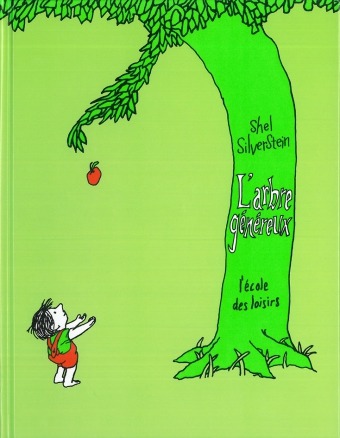
L'Arbre généreux, Shel Silverstein, L'Ecole des loisirs - Album dès 5-6 ans
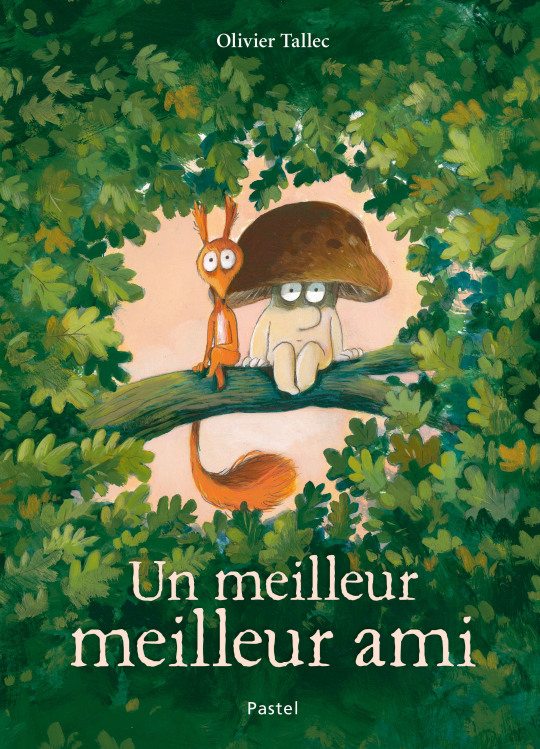
Un meilleur meilleur ami, Olivier Tallec, Pastel / L'Ecole des loisirs - Album dès 5-6 ans

Hipou, Oili Tanninen, La Partie - Album 0-3 ans
18 mars 2023 - Le Cycle de la vie

Il est où Diouke, Emilie Boré, Vincent Di Silvestro, La Joie de lire - Album dès 5 ans

La Fougère et le bambou, Marie Tibi, Jérémy Pailler, Kaléidoscope - Conte dès 5-6 ans
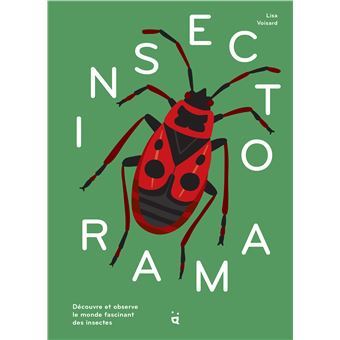
Insectorama, Lisa Voisard, Helvetiq - Documentaire dès 8 ans
25 mars 2023 - Salon du livre de Genève

Elles : tomes 1 et 2, Aveline Stokart, Kid Toussaint, Le Lombard - Bande dessinée dès 11 ans

Magda, cuisinière intergalactique, Nicolas Wouters, Mathilde Van Gheluwe, Sarbacane - Bande dessinée dès 10 ans
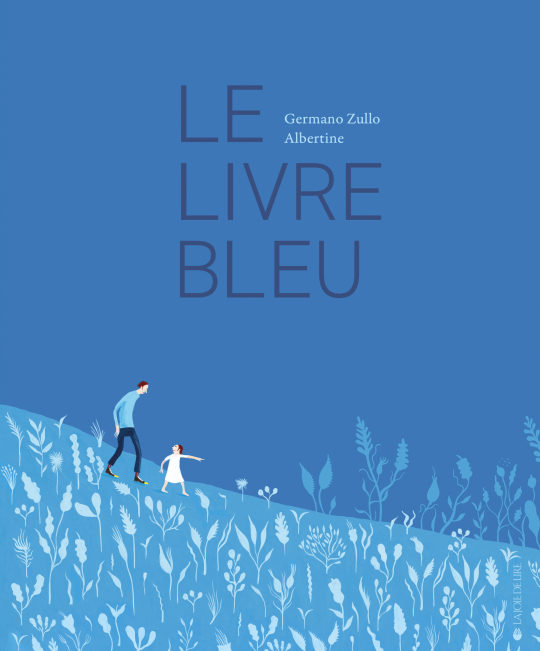
Le Livre bleu, Germano Zullo, Albertine, La Joie de lire - Album dès 5 ans
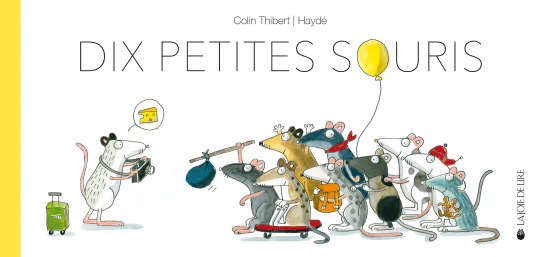
Dix petites souris, Colin Thibert, Haydé, La Joie de lire - Album dès 3 ans
1er avril 2023 - Dès livres animés pour les petits

Bleu pop. Blanc pop, Aurore Petit, La Martinière - Livres animés dès 9 mois

Jazzy dans la jungle, Lucy Cousins, Hélium - Livre à caches dès 2 ans

La Souris qui portait sa maison sur son dos, Jonathan Stutzman, Isabelle Arsenault, Les éditions des Eléphants - Album dès 3-4 ans
08 avril 2023 - Des romans pour les vacances
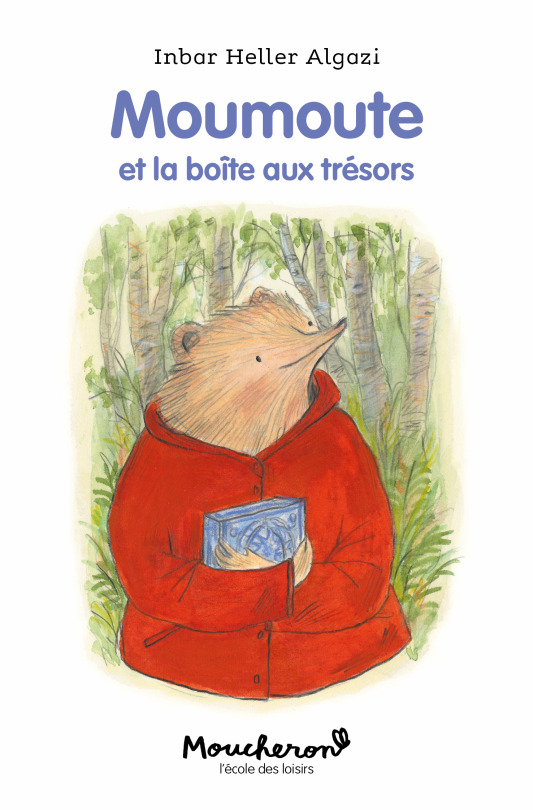
Moumoute et la boîte aux trésors, Inbar Heller Algazi, L'Ecole des loisirs - Roman dès 6 ans
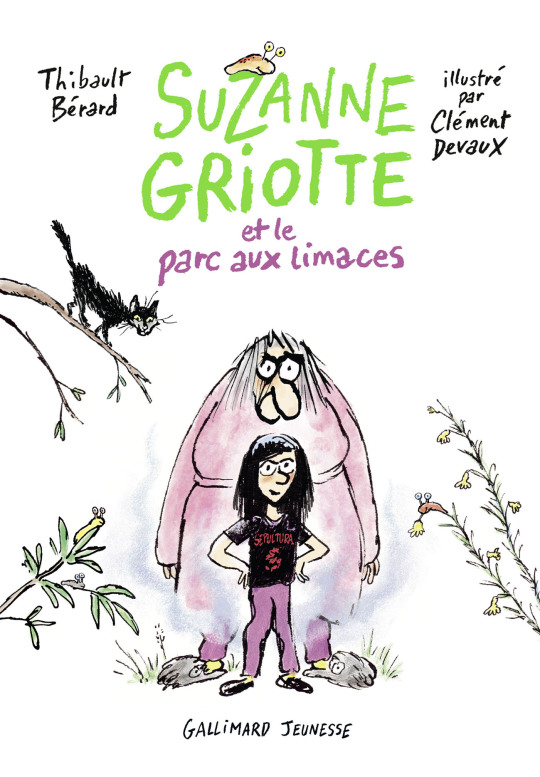
Suzanne Griotte et le parc aux limaces, Thibault Bérard, Clément Devaux, Gallimard Jeunesse - Roman dès 8 ans
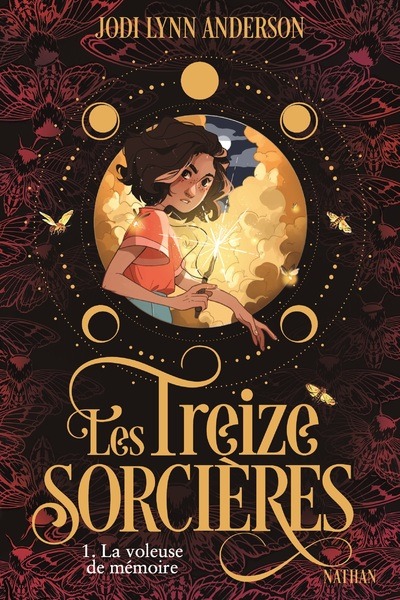
Les treize sorcières, Jodi Lynn Anderson, Nathan - Roman dès 9-10 ans
15 avril 2023 - L'engagement à hauteur d'enfant
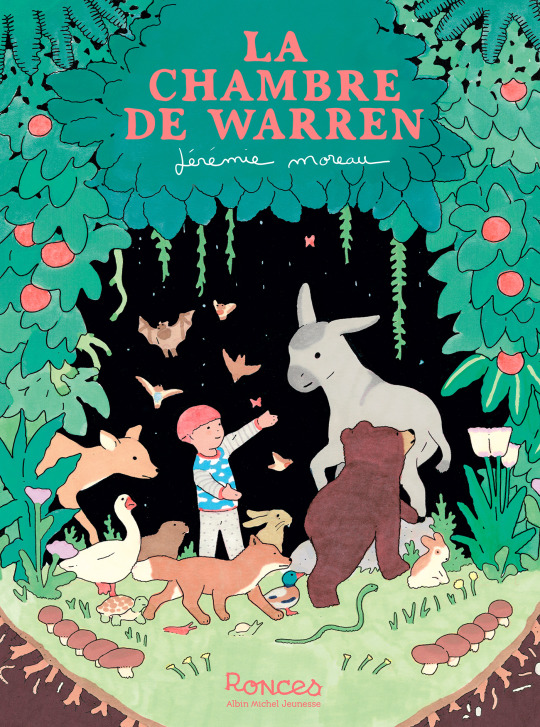
La Chambre de Warren, Jérémie Moreau, Albin Michel Jeunesse - Album dès 4 ans

Eddie et Noé: plus chauds que le climat, Max de Radiguès, Hugo Piette, Sarbacane - Bande dessinée dès 11 ans

Le Cercle des Dryades : opération Eurydice, Richard Couaillet, Actes Sud Jeunesse - Roman dès 8-9 ans
22 avril 2023 - Le pouvoir de l'imagination

L'Ami du grenier, Mamiko Shiotani, La Partie - Album dès 4 ans

On ferait comme si, André Marois, Gérard DuBois, Grasset Jeunesse - Album dès 5 ans

L'Idée du placard, Jean-Luc Englebert, Pastel / L'Ecole des loisirs - Album dès 6 ans
29 avril 2023 - En vacances

Ah! les voyages, Marie Caudry, Editions Thierry Magnier - Album dès 5 ans
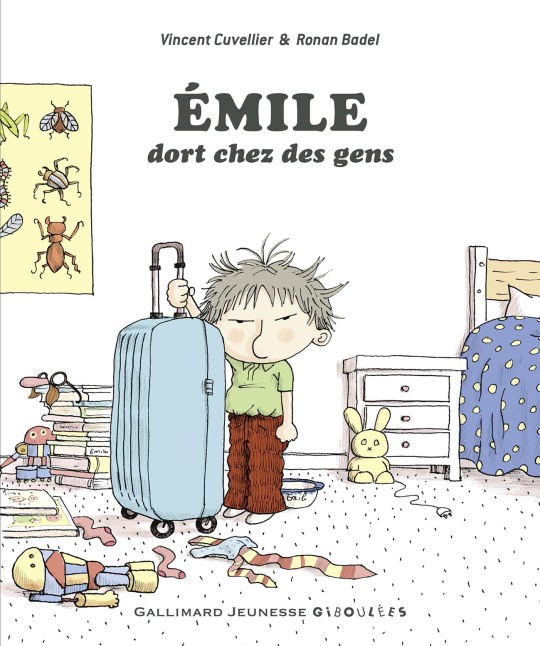
Emile dort chez des gens, Vincent Cuvellier, Ronan Badel, Gallimard Giboulées - Album de 3 à 6 ans

Presque perdu, Hervé Giraud, Aurélie Castex, Seuil Jeunesse - Roman dès 8-9 ans
#Flammarion#Emmanuel Bourdier#Les Editions des Eléphants#L'Ecole des loisirs#Shel Silverstein#amitié#biographie#Olivier Tallec#La Partie#Pastel#La Joie de lire#Emilie Boré#Vincent Di Silvestro#Lisa Voisard#insectes#mort#Sarbacane#Germano Zullo#Albertine#Albertine Zullo#Hélium#Lucy Cousins#Aurore Petit#Les éditions des Eléphants#Grasset Jeunesse#Seuil Jeunesse#Vincent Cuvellier#Ronan Badel#Hervé Giraud#Marie Caudry
1 note
·
View note
Text
0 notes
Text
81
“”Je vous défends, dit-elle, d’avoir ces regards qui ont l’air de connaître et de savoir. Ne vous imaginez rien d’autre que ce que je vous dis. Je vous déteste. On ne peut pas avoir d’estime pour vous. Vous êtes plus vil qu’une chenille Vous n’êtes pas digne d’être aimé. Vous ne comprendrez jamais ce que c’est que l’amour et comme on est sans défense. Vous n’avez même pas le droit d’y penser. Quand on est comme vous on se demande d’abord si on a le cœur capable. C’est de la plus simple honnêteté. Mais vous n’êtes même pas honnête et la rivière a plus de cœur que vous. Si j’étais sûre de pouvoir vous rendre malheureux, je vous maudirais.”
Giono, Que ma joie demeure, Paris, Editions Bernard Grasset, 1935, p. 278
“C’était très exactement, ce soir-là, parmi les javelles répandues, qu’il avait senti pour la première fois son corps douloureux. Il pouvait dire “son cœur douloureux”, c’était la même chose. [...] Il avait envié Honoré et Jourdan, et Jacquou tout vieux. Il avait pensé à Carle avec Mme Carle ; à Randoulet avec Honorine. Ces maisons douces, ces lits. Il avait eu soudain besoin d’un abri pour son corps ; pensant moins à ces maisons et à ces lits qu’à un désir qui l’avait brûlé soudain en entendant craquer les grains du blé maigre : le désir d’être abrité sous une main qui vous caresse le visage.”
ibid., p. 280
0 notes
Photo

Hervé Bazin ~ qui j'ose aimer Joli livre relié en très bel état Editions Grasset 1954 1969 Ce récit, qui nous est fait à la première personne par Isabelle, est d'une richesse psychologique et verbale rarement égalée. La vieille demeure, son jardin décoiffé qui descend jusqu'à l'Erdre, les jeux de la nature et des saisons se mêlant aux nuances intérieures du drame, composent un ensemble d'une opulence, d'une vigueur et souvent d'une poésie qui nous ravissent à la fois et nous bouleversent. #librairiemelodieensoussol #melodieensoussol #oiseaumortvintage #libraire #librairie #librairiemarseille #librairieparis #librairieindependante #librairieenligne #librairiedoccasion #livresdoccasion #bookstagram #booklover #hervebazin https://www.instagram.com/p/Cor3qm4MInw/?igshid=NGJjMDIxMWI=
#librairiemelodieensoussol#melodieensoussol#oiseaumortvintage#libraire#librairie#librairiemarseille#librairieparis#librairieindependante#librairieenligne#librairiedoccasion#livresdoccasion#bookstagram#booklover#hervebazin
0 notes
Text
Good article about the Iran uprising now and the Islamic veil from a french point of view (english translation below)
Louise El Yafi: "The veil French women are wearing is same one Iranian women are burning".
By Louise El Yafi
Iran is in flames after a young woman died, arrested and killed for not properly wearing her headscarf.
Does the obligation for Iranian women to wear the tchador really have nothing to do with some frenchwomen's choice to wear it?
It does and there is no ideological difference between an iranian tchador, an afghan burqa, a saudi abaya or a headscarf worn in Creil (a Paris suburb), states Louise El Yafi, essay writer and legal expert.
Mahsa Amani's death, arrested and killed for not properly wearing her headscarf, has generated unprecedented rallying against mandatory wearing of the tchador for Iranian women. But there are some in France who still think that the mandatory veil in Tehran has got nothing to do with the one worn by some women in France.
This is the opinion of islamologue François Burgat according to whom "the obligation for Iranian women to wear the veil deprives it of the meaning millions wearing it want to give it".
But does the obligation for Iranian women to wear the tchador really have nothing to do with some frenchwomen's choice to wear it ?
Actually, Iran has only implemented politically a guideline created from centuries of rigoristic interpretations of the Quran. However since it advocates a political project aiming to establish an ideology in minds all over the world, the veil forced on Iranian women is in reality the exact same than the one French women can freely choose to wear.
1979: THE VEIL AS A SYMBOL OF FREEDOM AGAINST THE SHAH
In her book Un voile sur le monde (A Veil over the World, french edition Observatoire), journalist Chantal de Rudder explains how, following colonel Reza Khan's coup (21 February 1921) Iran and the rest of the region lived through a period of unveiling modelled after Atatürk. At the time, muslim leaders thought the veil was the symbol of the underdevelopment that made colonisation possible. Wearing the veil was forbidden by law in Iran in 1935.
Despite the evidently authoritarian regime of the Shah, this unveiling however went hand in hand with women's rights' progress in Iran. As soon as 1936, Iranian girls were able to go to school like the boys and at the start of the 60s Iranian women not only obtained the right to vote but also won elected seats.
Far from being universally considered as a progress of human rights, forbidding the veil had the opposite effect: year after year bitterness won over many who saw this westernisation imposed with uniforms, as the stranglehold of american imperialism on the country, the decadence of their own civilisation and the forced push to a culture that was not their own. 1978 was a key turning point for the ultra-conservative revolution of Ayatollah Khamenei and during demonstrations against the Shah many Iranian women, whether religious or not, marched veiled from head to toe. The tchador, the media-friendly front of the Islamic revolution had become the symbol of freedom gained back from the western oppressor.
1979 then marked the mollahs' victory based on an extraordinary contradiction: veiling had turned into a symbol of modernity to back the political aspirations of one of the states with one of the lowest Human Rights record today.
The veil being mandatory from then on, Iran has officially become what Abnousse Shalmani calls in his book Khomeiny, Sade et moi (Khameini, Sade and me, french edition Grasset) a world "of beards and ravens".
COMING TO FRANCE
While Khameini was still exiled in France, his revolutionary islam was supported at the time by many French intellectuals. A lot of them hung out with one Ali Shariati, a thinker of the 1979 revolution. Although Shariati refuted the idea that the hijab was a religious obligation, he considered it as the essential tool of the revolution against the Shah's despotism by allowing Iranian women to "reclaim" their identity and their faith.
His ideas seduced many from Michel Foucault to Jean-Paul Sartre. Frantz Fanon, a major figure of anticolonialism and author of The Wretched of the Earth, would wrote to him:"I would say that islam is, in the third-world, the most powerful social and ideological element to oppose the West. I hope with all my heart that authentic intellectuals of your countries will know to use this formidable weapon, this huge reserve of moral and cultural wealth, that lies deep in muslim societies."
In 1979, Le Monde (famous french left-leaning newspaper) incidentally presented Shariati as "a fighter for truth, justice, and faith" even comparing him with Charles Péguy (French socialist and anticlerical activist). In other words, many in Fance only read "Revolution" in the expression "Islamic revolution".
Inextricable intellectual links were then created between french marxism and iranian islamism that would then be applied by the french left which became more and more splitted over its "laïcité" (french version of secularism). As such, the case of Creil in 1989, the 2004 law prohibiting visible religious symbols in schools and the 2010 law prohibiting the full veil, would reveal as many symptoms of the disease eating away at a specific part of the Left: cowardice in front of islamist entryism.
For despite the efforts of some intellectuals to ideologically legitimise shia islamism, the iranian veil, marketing tool of the mollahs' regime, never could have been exported to this degree in France from the 80s onwards if not for the immobilism, the complacency, and even the active help of obliging local and national policies.
Thus, according to the Algerian writer Boualem Sansal "France herself worked to put herself in this state of imminent death, out of bravado, stated powerlessness, and timidity; maybe with the idea that once she reaches the depth of the tomb, she will then be able to kick herself back up, stronger and better ." We now know that this did not happen.
THE VEIL'S STRENGHT LIES IN THE FACT THAT IT DOES NOT HAVE BORDERS
The reason why the mollahs saw the veil as an essential indicator of the succes of their movement lies in the Quran itself through the concept of Ummah. It is defined as the community or even the "nation of muslims". It is through this idea that the political objective of islam must be understood, i.e. an ideological conquest with universal and planetary ambitions.
In addition, whether maoism, stalinism or even nazism, every movement, especially if its goals are totalitarian, always conceptualises its propaganda through at least one item of clothing. Why?
Because clothing linked with political ideology is often the first visible sign of succes of the movement supporting it.
In other words, exactly like Mao supporters wore the shirt of the same name, the veil has become an indicator for the mollahs as well as for islamists all over the world of whether -or not- their ideology is advancing.
Whereas wearing the tchador was in 1978 the proof that many Iranian women supported the revolution underway, the fact that they are massively rejecting it today thus demonstrates, or so we hope, that the mollahs' regime is on its last leg.
By imposing then exporting the "modern veil" that more and more western women are adopting, Iran has in reality fully attained the ambitions of the Ummah, i.e. to erase all frontiers to create a community nation of "muslims" with suposedly no differences between them. And what could be better to emphasise this homogeneity than enforce the same uniform for half of the community?
Thus, whether it is worn in Tehran, Paris, or Kaboul, the veil aims to strip women of their citizenship and to dress them up with an identity that places them as inferior to men. Under the cover of "universalising" islam, the veil is really just an excuse to homogeinise "muslim women" by erasing not only their hair but also their rights.
IRANIAN TCHADOR, AFGHAN BURQA, SAUDI ABAYA, VEIL WORN IN CREIL...
It does not matter whether it is worn by force in an autocratic religious state or by choice in a secular democracy. In reality, there is no ideological difference between an iranian tchador, an afghan burqa, a saudi abaya or a veil worn in Creil.
Ideologies do not follow borders and that is even their main strength. The veil is no exception.
The iranian activist Masih Alinejad who took refuge in the US, launched a few months ago the movement Let us Talk on social media which asks western neoprogressists to stop denouncing any ideological criticism of the hijab as islamophobic.
This request is indeed fundamental because although wearing a headscarf must remain a right in France, the choice of some women to wear the veil too often contributes to deny the same freedom to women who are not as lucky and cannot choose.
In 2009, Élisabeth Badinter said in the Nouvel Observateur (left-leaning french magazine): "It is your choice today but who knows, maybe tomorrow you would be happy to be able to change it. They cannot... Think about it."
Besides, those who have been trying to make us believe that the veil is just a harmless scrap of fabric are now hard pressed to prove it. A scrap of fabric does not kill. An ideology can.
0 notes
Text
« Adieu Tanger » de Salma ElMoumni
Rentrée Littéraire 2023. Parution le 30 Août aux Editions Grasset. Alia est une jeune adolescente qui vit à Tanger. Comme toutes les jeunes filles de son âge, elle découvre le lot quotidien des femmes dans ce pays : être scrutée dans la rue, déshabillée du regard, suivie, insultée. Les relations avec son père sont quasi inexistantes puisqu’elle […]« Adieu Tanger » de Salma ElMoumni
View On WordPress
0 notes
Text
C'est Lundi, que Lisez-vous ? #220
Pour l'instant, c'est un bilan fort réjouissant et rempli que livre ce mois d'avril, j'espère que le mois de mai sera aussi fructueux.
Cher.e.s voyageur.e.s,
Comme tous les lundi, je vous présente mes lectures passées, présentes et peut-être futurs.
Ce rendez-vous a été mis en place par Galleane et repris par moi. Je suis heureuse d’être responsable de ce rendez-vous. Je curieuse de voir vos reprises, lectures passées, présentes et à venir 😀
Pour l’instant, c’est un bilan fort réjouissant et rempli que livre ce mois d’avril,…

View On WordPress
#Audible#éditions Harlequin#éditions Soleil#Benjamin Lacombe#C&039;est Lundi#que lisez-vous ?#editions grasset#Janette Oke#Le Highlander et la Valkyrie#Lorraine Fouchet#Natacha J. Collins#Robert Galbraith#Sang trouble#Yu Tomofuji
0 notes
Text
C'est Lundi, que Lisez-vous ? #216
J'ai eu une semaine chargée en lecture. J'adore...
Bonne lecture !
Cher.e.s voyageur.e.s,
Comme tous les lundi, je vous présente mes lectures passées, présentes et peut-être futurs.
Ce rendez-vous a été mis en place par Galleane et repris par moi. Je suis heureuse d’être responsable de ce rendez-vous. Je curieuse de voir vos reprises, lectures passées, présentes et à venir 😀
Je suis allée à l’Apéro polar à la bibliothèque Parmentier. C’était pour une…

View On WordPress
#éditions belfond#éditions ki-oon#Blanc mortel#Blue period#c&039;est lundi#Culottées#editions grasset#Janette Oke#Je revenais des autres#Manga#Mélissa Da Costa#Penelope Bagieu#que lisez-vous ?#Rachel Abbott#Robert Galbraith#Sang trouble#Sous emprise
0 notes
Photo

Lino Ventura in Le Deuxième Souffle (Jean-Pierre Melville, 1966)
Cast: Lino Ventura, Paul Meurisse, Raymond Pellegrin, Christine Fabréga, Marcel Bozzuffi, Paul Frankeur, Denis Manuel, Michel Constantin, Pierre Zimmer, Pierre Grasset. Screenplay: José Giovanni, Jean-Pierre Melville, based on a novel by José Giovanni. Cinematography: Marcel Combes. Production design: Jean-Jacques Fabre. Film editing: Monique Bonnot, Michele Boëhm. Music: Bernard Gérard.
I have to admit that I didn't pay a lot of attention to the plot of Jean-Pierre Melville's Le Deuxième Souffle, other than to sort out the major relationships among the characters. And I think I'm right about that, just as I think it's foolish to try to unravel the plot of, say, Howard Hawks's The Big Sleep (1946). Because the point is not what story Melville (or Hawks) is telling us, but how he's telling it. It's a film full of ironic twists, starting with the jailbreak scene that frees our protagonist, Gu (Lino Ventura). He and one of his accomplices make a leap from a roof to a facing wall and land just short enough to find themselves clinging to that wall. But the third accomplice leaps well across the gap. We think he's the one who made it to the other roof with room to spare, except that there's no "other roof" -- it's a sheer wall, as we discover when Gu and the other man rappel down the far side and find the third man fallen to his death. And so the film goes, with Melville undermining our expectations at every turn. When Commissioner Blot (Paul Meurisse) arrives at a crime scene where a man has been murdered, we expect the standard interrogation of witnesses. Instead, Blot, jaded by too many such crime scenes, tells each of the witnesses what lies they are about to tell him and lets them go. Even the big set piece, the elaborately planned platinum heist, undermines our expectations because nothing goes especially wrong. There is one innocent guy who arrives on the scene, but he's neatly dealt with. Usually, in big thriller heists, there's a major screwup that causes the thieves to come up with a Plan B, but not here. The big screwups come when the crooks have to deal with sharing the loot. There's also a witty setup for the confrontation of one of the conspirators with several others, in which we see him case the joint and plant a gun on top of an armoire. Then we see another conspirator find and remove the gun. We expect the guy who planted the gun to get shot when he goes for the hidden gun, but it turns out that he's anticipated this move and has the element of surprise on his side after all. So it goes throughout Melville's film, which is sometimes seen as a story of "destiny, death, and bleak existential choice," full of "elemental concerns." It may well be that, but it's also a kind of very dark comedy. There are also scenes that I cherish for their slight absurdity. After being badly beaten by the cops under the direction of Inspector Fardiano (Paul Frankeur), Gu is confined to a hospital bed under guard. When a pretty nurse comes in to check on Gu, the guard follows her out into the hallway, giving Gu a chance to rip out his IV and get the jump on the distracted guard. Standard thriller stuff, but I was amused to notice that the nurse was wearing high heels. I doubt if French hospital nurses have ever made their rounds in Louboutins, so it's possible to think of this as a kind of gaffe on Melville's part, but I rather suspect that he wanted the nurse to look as sexy as possible and couldn't care less about verisimilitude. In short, he loved movies more than he loved realism. For all its existential subtext, Le Deuxième Souffle is a movie movie.
1 note
·
View note
Text
Top 5 des Romans de l'année 2021
Top 5 des Romans de l’année 2021
Pour inaugurer cette semaine de préparatifs des cadeaux et des fêtes de Noël, voici de nouvelles chroniques. Et, pour commencer, je vous présente mon Top 5 des romans de l’année 2021. Alors, bien sûr, je n’ai pas fini de lire des romans parus en 2021, mais déjà, mes coups de cœur sont déterminés.
Le choix fut extrêmement difficile, tant la production littéraire fut cette année dense et nombreuse.…

View On WordPress
#Année 2021#Billet littéraire#Chroniques littéraires#Editions Grasset#Editions noir sur blanc#Editions Stock#Gallimard#roman#Seuil
0 notes
Text
Des lectures pour l'été
La plupart des titres jeunesse de cette chronique figurent dans la double-page "Lectures jeunesse pour l'été" du supplément littéraire du quotidien Le Temps, que Sylvie Neeman et moi nous sommes partagée. Ils sont suivis par des romans adultes lus ces derniers mois et que j'ai aimés.
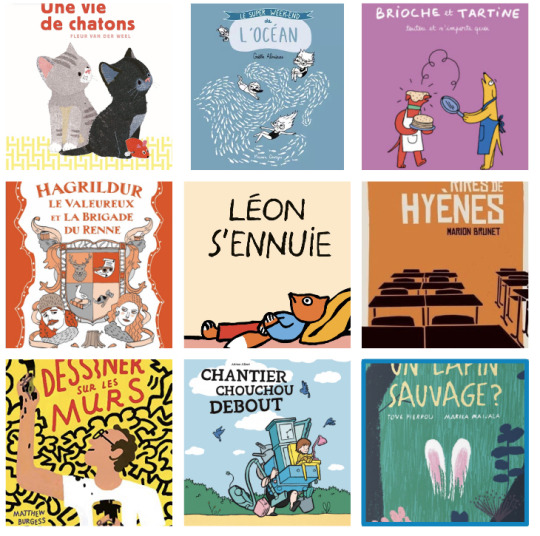
Qu'on ne s'y fie pas. Si sur la couverture ces deux ont l'air bien tranquilles, dans la vraie vie, c'est autre chose...

Si je partais en vacances avec petit enfant et ne pouvais emporter qu'un livre, je choisirais "Une vie de chatons". Avec un nombre suffisant de pages, ce livre permet d'y passer du temps, d'y revenir et de piocher dans la journée de Noyau et de Plume qui s'étire de repas en sieste, de découvertes en découvertes qui sont autant de jeux pour ces deux petits. On ne voit qu'eux et le monde qui les entoure, mais leur posture parfois ou encore une phrase nous disent qu'ils ne sont pas seuls. Dans un format presque carré, les illustrations un peu japonisantes alternent les pages d'action et celles qui mettent en avant des détails de leur quotidien à la façon d'un imagier. On peut y apprendre la langue des chats et aussi à compter, découvrir le nom d'animaux et d'objets. Irrésistible, ce bijou de livre est très complet, bien observé et très rythmé.
Une vie de chatons, Fleur van der Weel, La Partie, 2021
L’océan à hauteur de petits scientifiques

Hôtels, campings, maisons de vacances, amoureux de l’océan... tous devraient avoir à disposition cette bande dessinée documentaire, histoire de la partager en famille et de faire connaissance de ses quatre petits personnages bien croqués qui, le temps d'un week-end, se retrouvent à camper sur une île. Les parents ne sont pas bien loin qui reviendront les prendre à la fin du séjour. De picnics en baignades, ils prennent le temps d'observer, émerveillés, ce qui les entourent, s'expliquer les uns aux autres l’océan dans toute sa diversité ; de sa surface à ses abysses, de ses plages au ciel qui le surplombe, de sa faune à sa flore. Au fil des chapitres, s'ouvrent de temps à autres de larges planches de la taille de quatre pages, histoire pour le lecteur de plonger un peu plus dans ces espaces. A noter que tout a été validé par des scientifiques. Une vraie réussite. Pour preuve, l'album figure désormais dans la bibliothèque de l'hôtel en Bretagne où j'ai passé une semaine tout récemment !
Dès 7 ans et pour longtemps
Le super week-end de l’océan, Gaëlle Almeras, Maison Georges, 2022
Des blagues en veux-tu, en voilà

Voici les chiens Brioche et Tartine, rois de la farce et de la chamaillerie. Pas un pour rattraper l’autre, même si Tartine est le plus futé des deux. Proches des enfants, les historiettes de cette BD se déroulent en planches de huit cases qui se terminent invariablement par un gag plutôt potache qui les ravira et ce d’autant plus s’ils sont amateurs de blagues Carambar et J’Aime lire. A noter que certains gags pourraient bien devenir des « private jokes » au sein des familles ! Plus délirant, mais tout aussi réussi que l’Ours Barnabé (La Boîte à Bulles) et Le Club des amis (Editions 2024).
Dès 6 ans
Brioche et Tartine. Toutou et n’importe quoi, Violette Vaïsse, La Joie de lire, 2022
Un anti-héros au Moyen Age
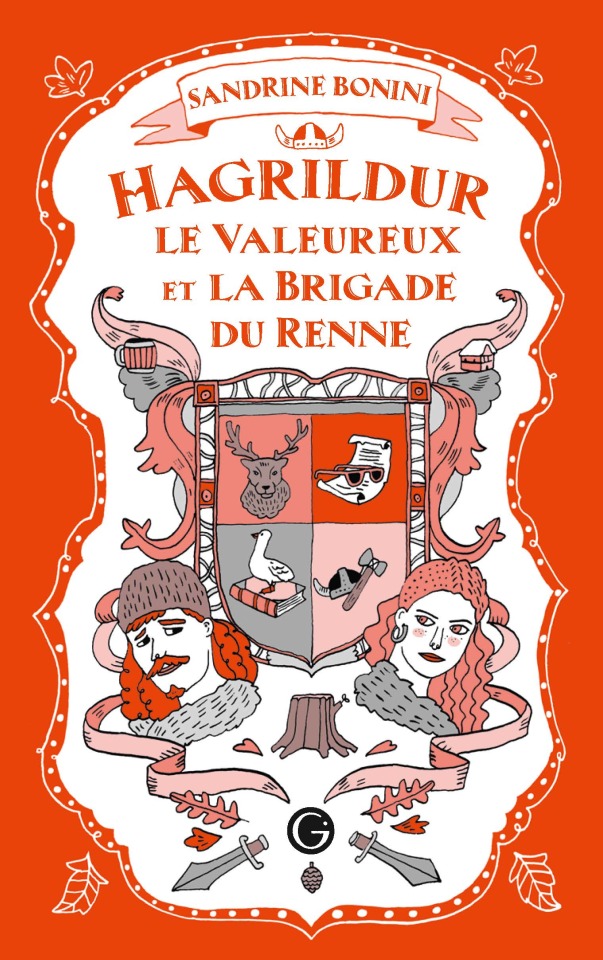
Bientôt, pour sûr, Hagrildur-le-Valeureux sera membre du Grand Ordre des Cavaliers, quitte à risquer de louper l’heure de sa sieste et quelques ripailles. Il part donc en quête du lieu où doit se dérouler la Convention des Cavaliers afin d’être intronisé. L’accompagnent deux valets empotés qu’il a dégotés et une étrange fille habillée comme un garçon qui l’agace profondément. Mais rien ne se déroule comme prévu. On l’aura compris, dans ce roman médiéval hilarant, Hagrildur fait figure d’anti-héros. Quant aux autres personnages, c’est du même acabit, exception faite de l’énigmatique Gerda.
Dès 9-10 ans
Hagrildur le Valeureux et la brigade du renne, Sandrine Bonini, Grasset Jeunesse, 2022
Quel bazar avec Léon !

Parce qu’il a traité la voisine de dindon, Léon est puni et dans sa chambre s’ennuie.
Couché sur le lit, il boude. Une voix off entre en scène et le questionne sur qu’il pourrait faire. « J’en sais rien, c’est pour ça que je m’ennuie ». Finement observé, le geste - ici l’image - rejoint la parole, où Léon, toujours sur le lit, fait la bougie… pour l’instant ! On les aime ces petits albums qui sentent le vécu. L’histoire se déroule sans que le point de vue sur la chambre, comme une scène de théâtre sur la double page, ne change. Les dessins en aplats bordés de traits noirs rappellent celles, simplissimes et efficaces, de Lucy Cousins et sa souris Mimi.
Dès 3 ans
Léon s’ennuie, Violette Vaïsse, L’Agrume, 2022
En vacances, prendre de la distance pour réfléchir au harcèlement à l'école, ici celui d'un prof, et s'en souvenir à la rentrée
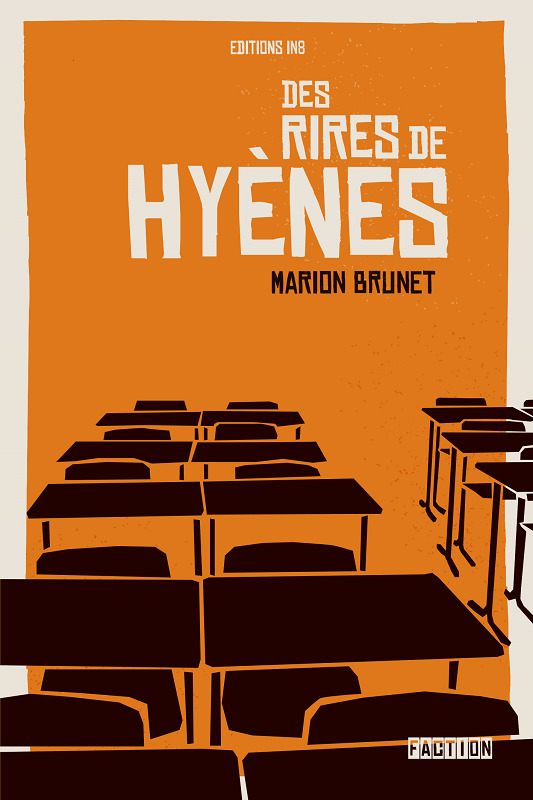
Un jeune prof aborde sa première rentrée au collège. Même s’il a – c’est normal – un peu d’appréhension, il a hâte de partager sa passion de la littérature. « Quand il entre dans la classe, ils devinent que ça va être facile de lui faire la misère, même s’ils ne savent pas exactement pourquoi. » Dans une des classes, un élève en particulier entraîne les autres et lui mène la vie dure ; de mal en pis jusqu’au drame. Cruel, ce beau roman pour ados aborde la thématique de la mise au ban et également de l’homosexualité.
Dès 14 ans
Des Rires de hyènes, Marion Brunet, Editions IN8, 2022
Les couleurs de Keith Haring

Keith Haring était un chic type, libre et amoureux de la vie, proche de l’enfance et des enfants. Ses graffitis et ses dessins sont présents et copiés dans le monde entier. Avec beaucoup de générosité, il a soutenu quantité de causes et de combats. Homosexuel et mort du SIDA ? Et alors ! Sa vie est un exemple de force et de courage pour petits et grands qui liront cet album dont les couleurs swinguent et où chaque mot est choisi avec pudeur et sensibilité. Le publier, c’est lui rendre « un hommage joyeux et vibrant qui appelle à la créativité ». Le pari est réussi, faites danser vos crayons !
Dès 6 ans
Dessiner sur les murs, Matthew Burgess et Josh Cochran, Versant Sud, 2022
Championnes de mère en fille

Sa maman devant concourir au championnat de deltaplane, une petite fille passe le week-end chez sa mamie et c’est en deltaplane que sa mère la dépose sur le toit de la maison. Cela tombe un peu mal car mamie a prévu de faire les grands nettoyages. Qu’à cela ne tienne, la petite participera. Pour nettoyer une maison, on la vide et on met tout dans la machine à laver, sauf les verres qui sont fragiles. Ici, tout est possible et quantité de thèmes sont abordés. Pourtant, le récit est factuel et le dessin d’une extrême simplicité. La médaille d’or sera pour la maman. On la partage avec Andrien Albert !
Dès 3 ans
Chantier chouchou debout, Adrien Albert, L’école des loisirs, 2022
Un mensonge pas bien méchant
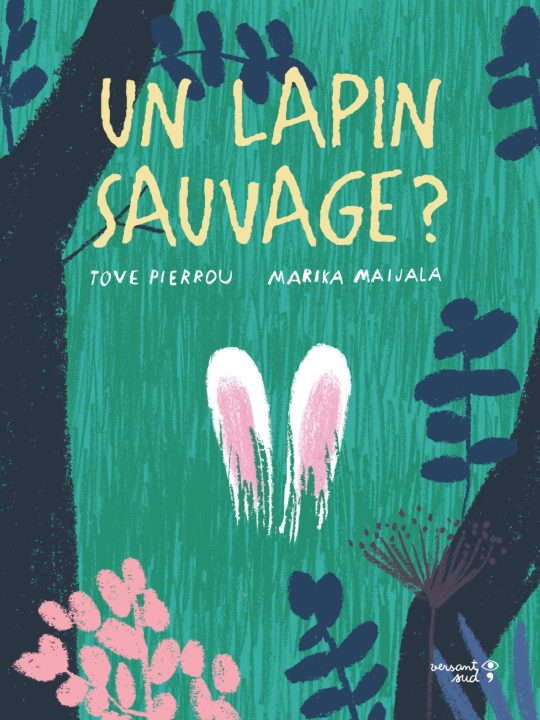
Kaia, Kotti et Carmen sont copines, peut-être même « meilleures copines ». Enfin cela dépend des jours car l’amitié chez les enfants est parfois mouvante, surtout s’agissant d’un trio. Aujourd’hui, c’est Kaia qui en fait l’expérience. Les deux autres ont chacune un lapin, un vrai, mais pas Kaia. Pour se rapprocher de ses copines qui l’évitent, la fillette s’invente un lapin sauvage qui vit dans le pré, donc qu’on ne voit pas souvent… Depuis une dizaine d’années sont traduits des albums venant de Scandinavie où le monde de l’enfance est merveilleusement bien décrit, comme ici.
Dès 4-5ans
Un lapin sauvage ?, Tove Pierrou et Marika Maijala, Versant Sud, 2022
Des livres pour les adultes

Juste avant de partir en vacances, j'ai lu...
Un court roman de Claire Keegan, "Ce genre de petites choses", parfait quand on ne veut pas partir avec un livre entamé.
Bill Furlong est né et a toujours vécu dans une petite ville d'Irlande. Sa mère, domestique, est tombée enceinte à seize ans. Sa patronne, une veuve protestante, n'a rejeté ni la mère, ni l'enfant, ayant même assuré une bonne éducation à ce dernier. Bill s'est marié. Il est père de cinq filles et possède une dépôt de bois de chauffage et de charbon. Cet homme bon croule sous le travail, mais c'est ainsi que cela doit être dans cette région sévère et croyante.
La bourgade abrite un couvent. Peu avant Noël, Bill doit y livrer du charbon. Il découvre que les soeurs y exploitent à la blanchisserie des filles non mariées qui ont fauté et sont tombées enceintes.
Abordant le thème des blanchisseries de couvent en Irlande, on apprend que ces institutions, dont la dernière a fermée en 1996, étaient administrées et financées par l'Eglise catholique conjointement avec l'Etat irlandais. Il a fallu attendre 2013 pour que le gouvernement présente des excuses.
L'histoire se déroule en 1985. Les gens y sont si pauvres qu'on a parfois d'être cinquante ans plus tôt. Le thème, l'atmosphère, la description de ce héros simple et des questions qu'il se pose font de ce roman une petite merveille. Claire Keegan est décidément une grande écrivaine. Si vous ne le lisez pas prochainement, faites-le en fin d'année. Vous aurez entre les mains le parfait conte de Noël.
Ce genre de petites choses, Claire Keegan, Le Livre de poche, 2022
Et encore avant...
"Là où chantent les écrevisses" de Delia Owens. L'histoire d'une gamine abandonnée à l'âge de dix ans par sa famille, qui se retrouve à vivre seule dans les marais de Barkley Cove, en Caroline du Nord.
"Nickel Boys" de Colson Whitehead. Dans la Floride ségrégationniste des années 1960, un jeune garçon noir, prêt à intégrer l'université, est envoyé dans une maison de correction où les pensionnaires sont soumis aux pires sévices.
"Le Serpent majuscule" de Pierre Lemaître. Un polar aussi immoral et déjanté que ceux de Hannelore Cayre, puisqu'il n'a pas été sans me rappeler l'héroïne de "La Daronne".
"La Péninsule aux 24 saisons" de Inaba Mayumi. Une femme vivant à Tokyo décide de passer une année loin de la ville, dans une région au bord de la mer. Elle y fera l'apprentissage de la nature, de la lenteur, du travail, au fil des 24 saisons qui composent une année japonaise.
"Coupe sombre" et "La vieille maison" de Oscar Peer. Deux livres qui se ressemblent (à ne pas lire peut-être l'un à la suite de l'autre) où, dans un petit village des Grisons, le héros solitaire et rejeté livre un combat avec la nature dans l'un, avec les hommes dans l'autre. Oscar Peer est un des écrivains emblématiques du canton alpin des Grisons.
Des romans à paraître cet automne
"L'Odyssée de Sven" de Nathaniel Ian Miller. Retenez bien ce titre si vous souhaitez être embarqués par le jeune Sven dans le Spitzberg, île au nord de la Norvège. Il y apprendra l'art de la chasse et de la survie, accompagné de nombreux personnages qui vont et viennent, tous plus étonnants les uns que les autres. J'ai adoré ce roman.
Fans de Gaëlle Josse, réjouissez-vous. Bientôt vous lirez "La Nuit des pères" où une jeune femme qui avait coupé les ponts avec son père autoritaire - et c'est peu dire - est appelée par son frère à revenir au village des Alpes où ils ont grandi. Le père décline et perd la mémoire.
A lire sans doute le court roman "C'est plus beau là-bas" de Violaine Bérot. J'avais beaucoup aimé son précédent roman "Comme des bêtes". Ici, le décor semble tout autre. Un homme se retrouve enfermé du jour au lendemain dans un hangar avec d'autres hommes. Ce texte sur la vie communautaire pose des questions sur ce que nous sommes en train de devenir. On en reparlera.
Pendant mes vacances, j'ai lu et continue de lire...
Les six tomes de la saga "Blackwater" de Michael McDowell qui me rappellent l'appétit avec lequel j'ai dévoré, à l'âge de 10-12 ans, les seize tomes de "Jalna" de Mazo de la Roche que ma mère avait lus. Dans le même esprit, enfant, lors des vacances en famille sur la Costa Brava, je lisais un Agatha Christie par jour. J'avais une telle soif!
Bibliographie des romans adultes
Ce genre de petites choses, Claire Keegan, Le Livre de poche, 2022
Là où chantent les écrevisses, Delia Owens, Points, 2021
Nickel Boys, Colson Whitehead, Le Livre de Poche, 2022
Le Serpent majuscule, Pierre Lemaître, Le Livre de Poche, 2022
La Péninsule aux 24 saisons, Inaba Mayumi. Picquier poche, 2022
La vieille maison, Oscar Peer, Zoé poche, 2022
Coupe sombre, Oscar Peer, Zoé poche, 2020
Blackwater, Michael McDowell, Monsieur Toussaint Louverture, 2022
L'Odyssée de Sven, Nathaniel Ian Miller, Buchet Chastel. A paraître
La Nuit des pères, Gaëlle Josse, Notabilia. A paraître
C'est plus beau là-bas, Buchet Chastel. A paraître.
#Fleur van der Weel#Gaelle Almeras#Violette Vaïsse#Sandrine Bonini#Marion Brunet#Matthew Burgess#Josh Cochran#Adrien Albert#Tove Pierrou#Marika Maijala#Claire Keegan#Delia Owens#Colson Whitehead#Pierre Lemaitre#Inaba Mayumi#Oscar Peer#Nathaniel Ian Miller#Gaelle Josse#Michael McDowell#La Partie#Maison Georges#La joie de lire#Grasset jeunesse#L'Agrume#In8#Versant Sud#Editions Zoé#Buchet Chastel#Notabilia#Monsieur Toussaint Louverture
0 notes
Photo










Deux hommes dans Manhattan
(Two Men in Manhattan)
Dir: Jean-Pierre Melville
#<3#gif warning#deux hommes dans manhattan#two men in manhattan#jean pierre melville#jean-pierre melville#moreau#pierre#pierre grasset#anne#christiane eudes#le chanteur#glenda leigh#my gifs#my edit
22 notes
·
View notes